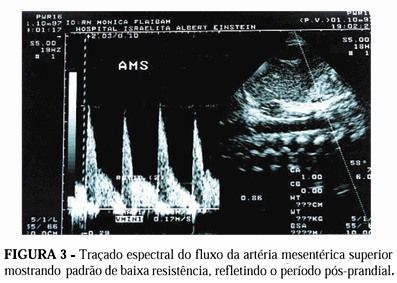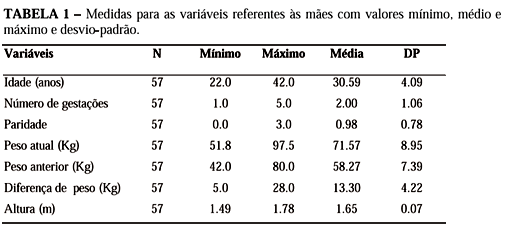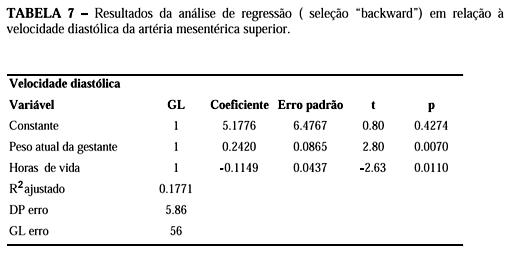OBJECTIVE: The evaluation of mesenteric blood flow using transcutaneous Dopplervelocimetry of superior mesenteric artery (SMA) is a non-invasive method for evaluation of the factors involving the intestinal sanguineous perfusion. This study was carried out to determine the SMA Dopplervelocimetry variables in term newborns, relating them to gestation and to fetal growth. METHODS: Fifty-eight mothers and their 59 neonates (one twin gestation) whose deliveries occurred at Hospital Israelita Albert Einstein were included. Toshiba SSH 140 equipment with color duplex-Dopplersystem of high-resolution was used, evaluating the SMA in its origim, determining caliber, systolic velocity, diastolic velocity, mean velocity and resistance and pulsatility indexes. RESULTS: It was observed that the caliber of superior mesenteric artery was 1.94 mm; the mean of systolic velocity was 86.47 cm/s ; the mean of diastolic velocity was 17.66 cm/s and mean velocity 36.93 .The indexes of resistance and pulsatility were 0.79 and 1.91 ( DP 0.46 and 9.54) respectively. The SMA caliber correlated positively with birth weight and negatively with cephalic perimeter. The velocities and indexes are related to the anthropometric data of the newborn, to hours after birth, to minutes of fasting and to the mother's weight at the end of gestation. CONCLUSION: It can be concluded that the SMA Dopplervelocimetric variables are related to the maternal and newborns' variables; possible factors involving this association are discussed. Characteristics such as newborn gender and mother's weight at the beginning of gestation did not alter results.
Superior mesenteric artery; Necrotizing enterocolitis; Bowel; Newborn; Neonatology














